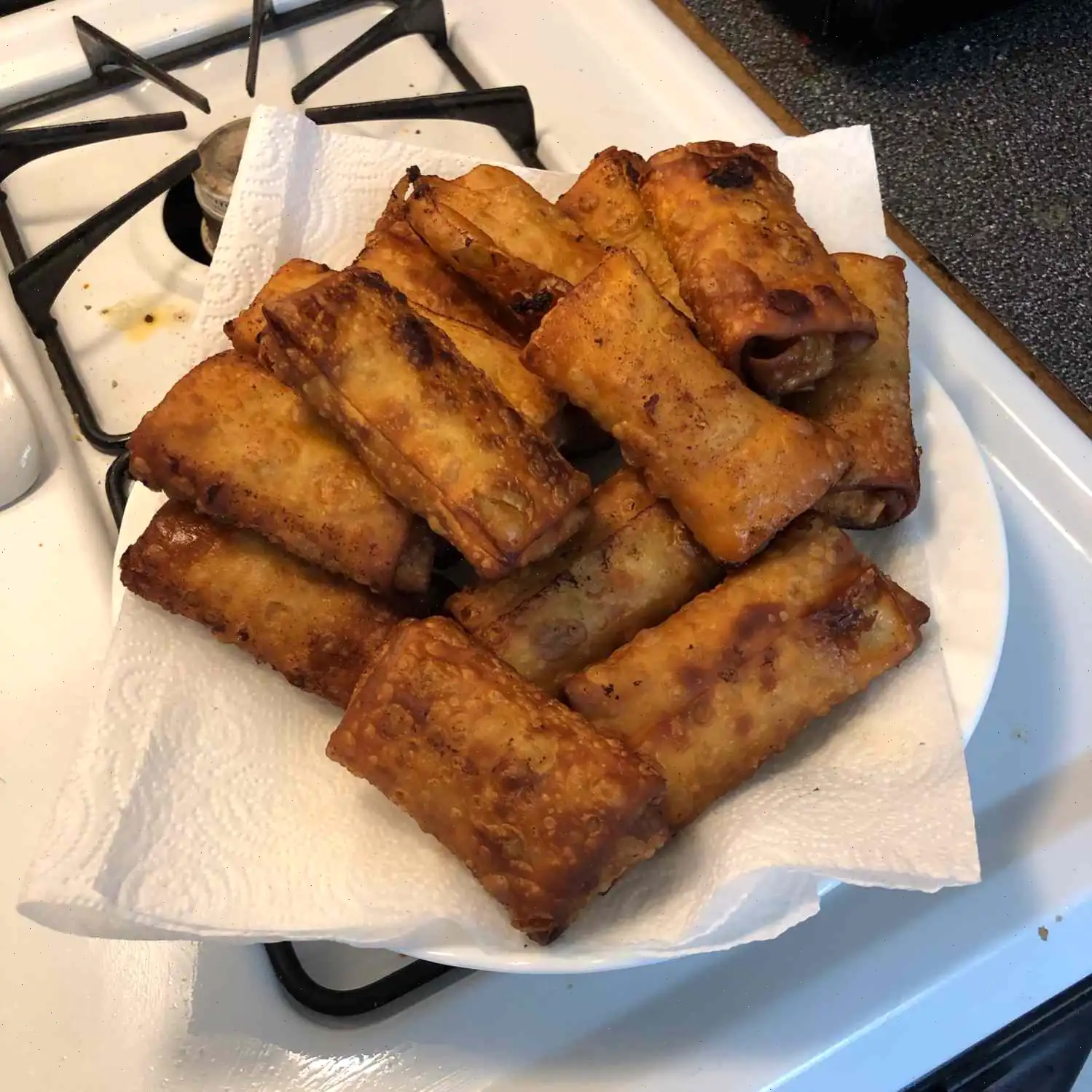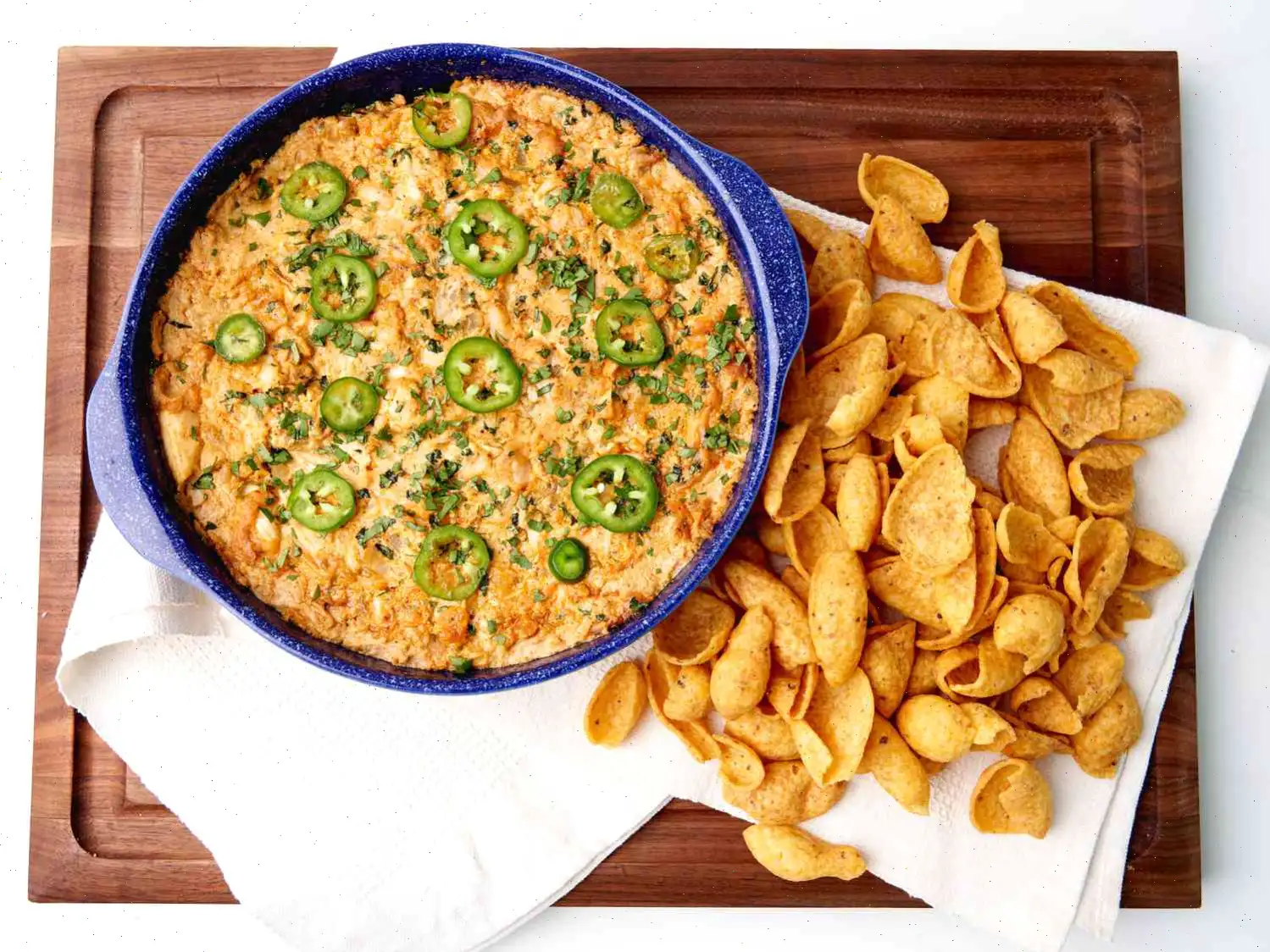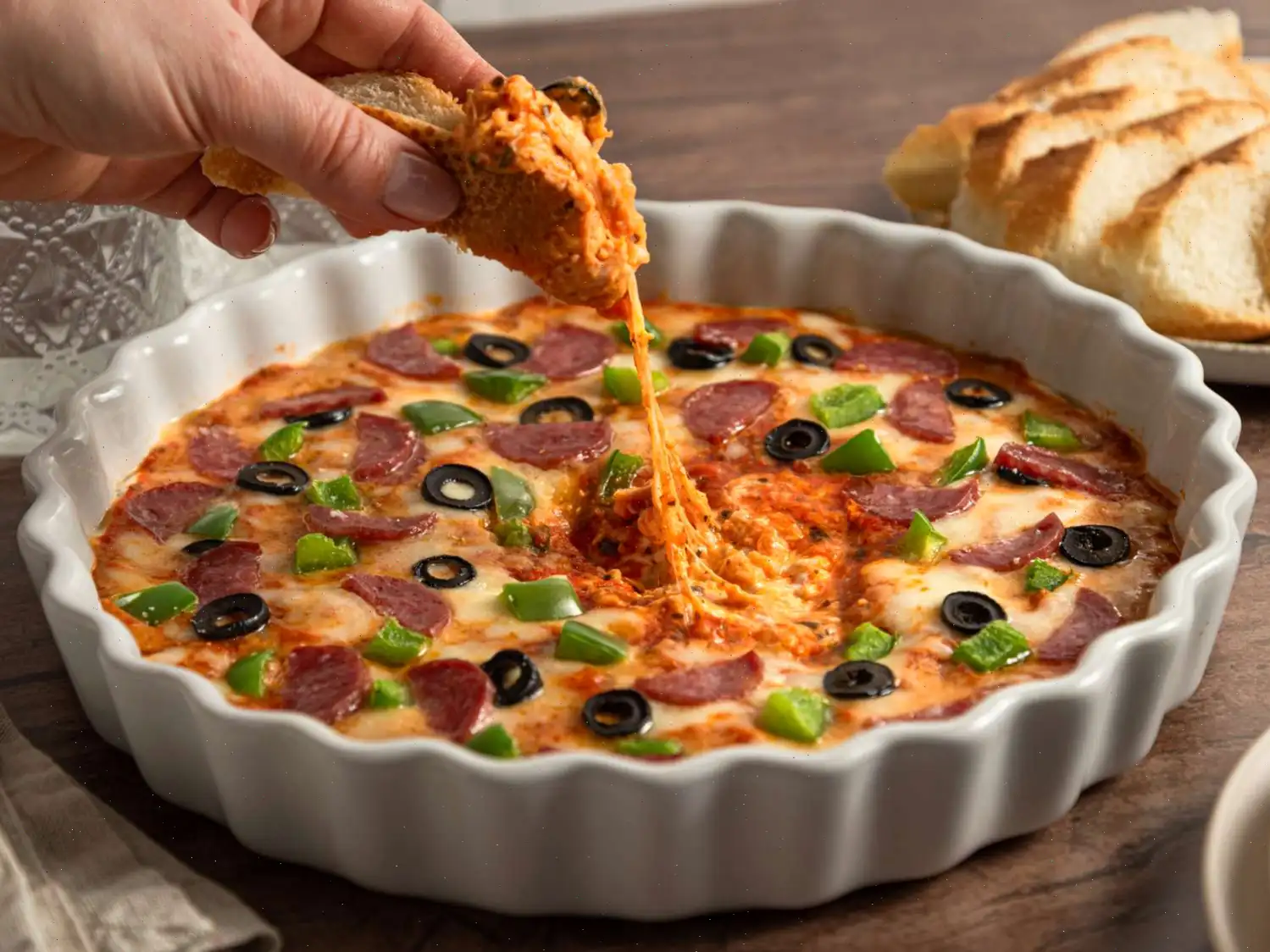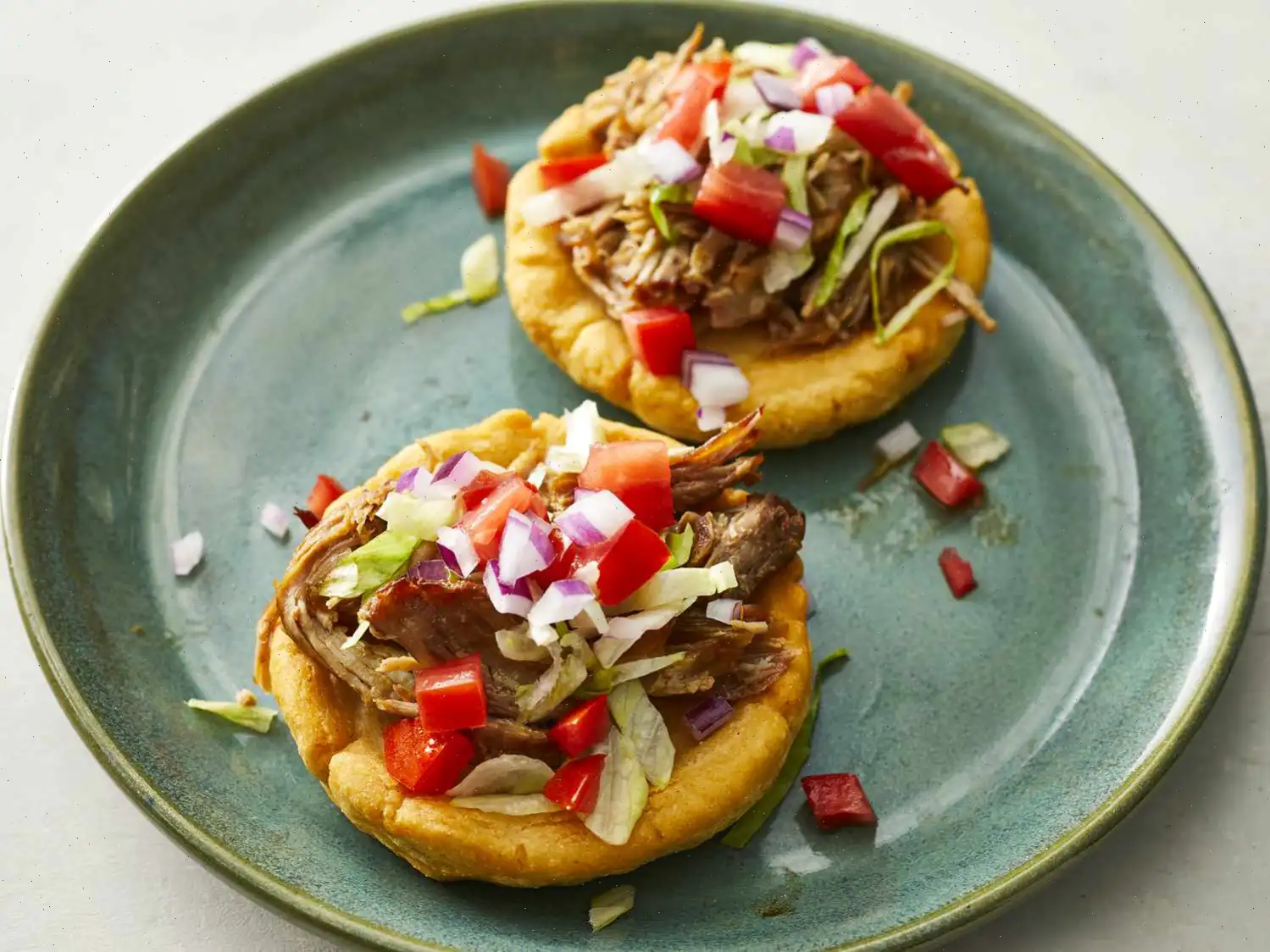
Lumpia - Filipino Shrimp and Pork Egg Rolls Recipe
Ingredients
- 1 pound ground pork
- 1 cup finely chopped raw shrimp
- cup finely chopped onion
- cup grated carrots
- cup finely chopped green onions
- 3 tablespoons soy sauce
- 1 teaspoon monosodium glutamate (MSG) (Optional)
- 1 teaspoon salt
- teaspoon ground black pepper
- 1 (16 ounce) package spring roll wrappers
- 1 large egg white, beaten
- 1 quart vegetable oil for frying
Directions
Step 1: In a large mixing bowl, combine the ground pork, chopped shrimp, finely chopped onion, grated carrots, green onions, soy sauce, MSG (if using), salt, and black pepper. Mix everything together thoroughly until evenly distributed.
Step 2: Lay the spring roll wrappers on a flat surface, covering them with a damp cloth to prevent them from drying out. Take one wrapper and place it on your work surface. Spoon a small line of the ground pork mixture across the wrapper, about inch from the edge. The line should be the width of your little finger.
Step 3: Carefully roll the wrapper tightly around the filling, making sure to tuck in the sides as you go. Seal the edges by brushing them with the beaten egg white.
Step 4: Repeat this process with the remaining wrappers, filling, and egg white until all the spring rolls are assembled.
Step 5: In a deep heavy pan or deep fryer, heat the vegetable oil to 375F (190C). Once the oil reaches the correct temperature, carefully lower the spring rolls into the hot oil in batches of 3 to 4. Fry them, turning occasionally, until they float and turn golden brown, which should take about 3 minutes.
Step 6: Remove the cooked spring rolls from the oil and drain them on paper towels. Optionally, you can cut each roll into thirds for easier serving.
Step 7: Repeat the frying process with the remaining spring rolls. Serve warm and enjoy!
Nutrition Facts (per serving)
- Calories: 43
- Total Fat: 2g (3% Daily Value)
- Saturated Fat: 1g (3% Daily Value)
- Cholesterol: 7mg (2% Daily Value)
- Sodium: 115mg (5% Daily Value)
- Total Carbohydrate: 4g (1% Daily Value)
- Dietary Fiber: 0g (1% Daily Value)
- Total Sugars: 0g
- Protein: 2g (4% Daily Value)
- Vitamin C: 0mg (0% Daily Value)
- Calcium: 5mg (0% Daily Value)
- Iron: 0mg (2% Daily Value)
- Potassium: 30mg (1% Daily Value)
* Percent Daily Values are based on a 2,000 calorie diet. Your daily values may be higher or lower depending on your calorie needs.

Origin of Lumpia:
Lumpia is a traditional Filipino dish that can be found in many Filipino homes, restaurants, and street food stalls. It has its roots in Chinese cuisine, brought to the Philippines by Chinese immigrants centuries ago. The word "lumpia" comes from the Chinese word "lun pia," which means spring roll. Over time, the Filipino version has evolved with local ingredients and flavors, making it uniquely Filipino. Today, lumpia is enjoyed at celebrations, gatherings, and as a beloved snack for many Filipinos worldwide.
Regional Variations:
Lumpia has several regional variations across the Philippines. The two most common types are lumpiang shanghai and lumpiang ubod. Lumpiang shanghai is the deep-fried version that is stuffed with ground pork, shrimp, and vegetables, while lumpiang ubod is a fresh spring roll filled with heart of palm (ubod) and vegetables, often served with a garlic-peanut sauce. In some regions, you might find lumpia served with sweet sauces or even a dash of spice, showing how versatile and regionally adapted this dish can be.
Distinguishing Features:
While lumpia shares similarities with Chinese spring rolls, the Filipino version is often distinguishable by its filling, which typically includes a mixture of pork, shrimp, and vegetables like carrots, onions, and garlic. The filling is wrapped in a thin spring roll wrapper and then deep-fried until crispy. Compared to other types of egg rolls or spring rolls, lumpia tends to be smaller, lighter, and crispier. The use of soy sauce, garlic, and sometimes MSG gives the filling a rich umami flavor that sets it apart from other fried rolls.
Where Lumpia is Served:
Lumpia is typically served as an appetizer or snack at Filipino gatherings and parties. It is also commonly found at street food stalls and food markets, especially during festivals and celebrations. Lumpia is often paired with a sweet and sour dipping sauce or Filipino banana ketchup, which adds a tangy and slightly sweet contrast to the savory filling. Its a staple at special occasions like birthdays, Christmas, New Year, and weddings.
Interesting Facts:
- In the Philippines, lumpia is a symbol of hospitality and celebration, often made in large batches for parties and family gatherings.
- Some variations of lumpia include surprising ingredients like raisins or water chestnuts, which add a sweet or crunchy twist to the filling.
- The popularity of lumpia has spread far beyond the Philippines, especially in countries with large Filipino communities, such as the United States, Canada, and the Middle East.
- Though often deep-fried, lumpia can also be served fresh, with a lighter wrapper, and accompanied by a sweet, tangy dipping sauce.
FAQ about Lumpia - Filipino Shrimp and Pork Egg Rolls Recipe
Comments
Heather Gomez
09/02/2022 03:50:48 AM
My wife frequently prepares this dish as it's always requested at parties. I highly recommend using a Filipino-style soy sauce like Datu Puti or Silver Swan brands (found at most Asian groceries). The difference is truly remarkable! When we've run out and she uses a different brand, the taste just isn't the same.
Ruth Allen
07/22/2023 01:45:30 AM
Absolutely amazing! I left out the MSG and made no other changes. I sliced the wrappers in half diagonally and folded them that way, and they still had more than enough wrapper. I will definitely be making these repeatedly. My husband couldn't stop eating them. Thanks a lot for sharing this recipe!
Victoria Johnson
04/13/2024 11:08:47 PM
This is my go-to recipe for making lumpias. I leave out the MSG and like to enhance the filling mixture with some granulated garlic and red chili flakes.
Carolyn Martinez
09/13/2024 12:40:41 PM
Delicious! We opted for banana ketchup as a dip, which is not only traditional but also incredibly tasty.








